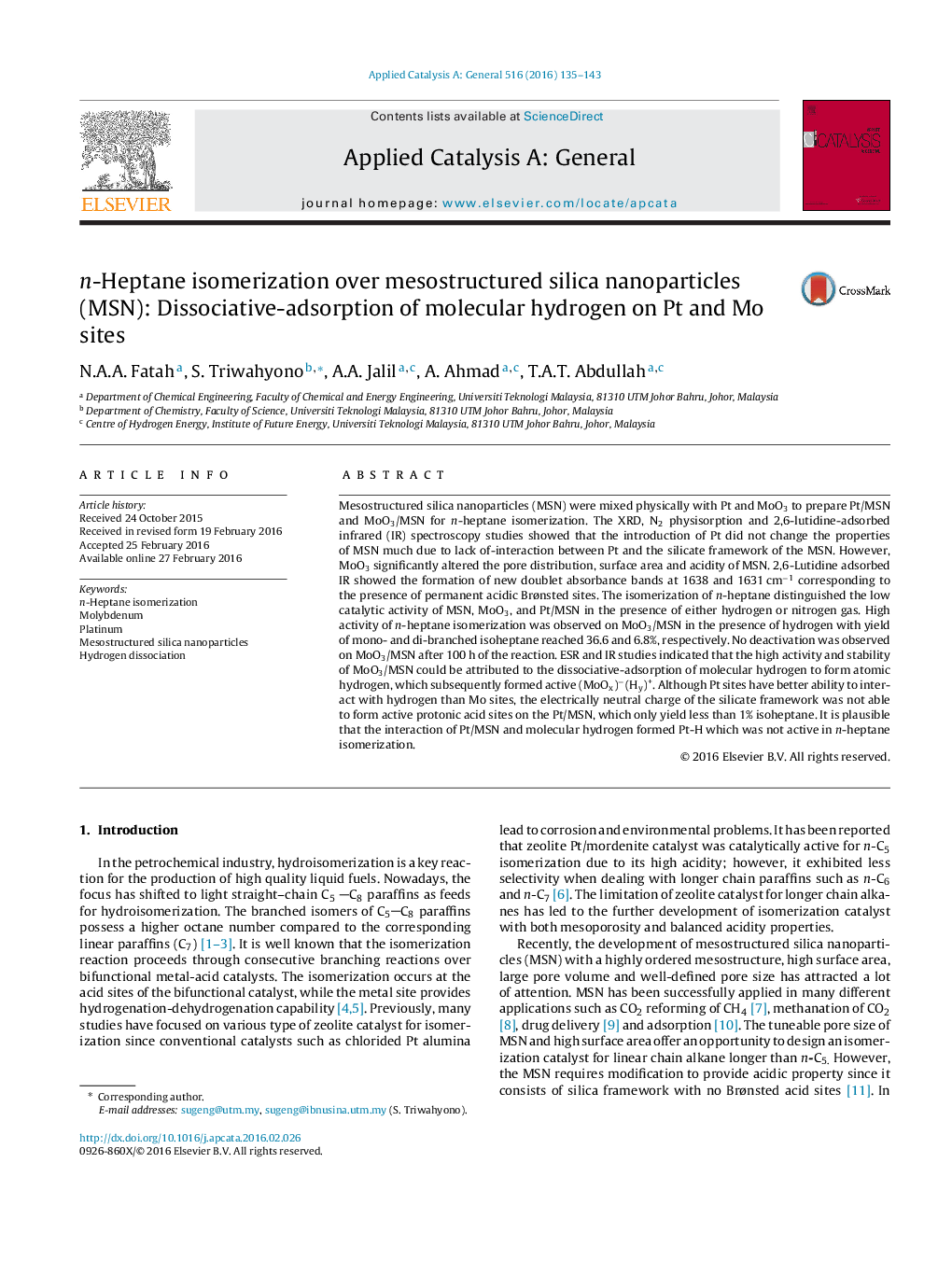| کد مقاله | کد نشریه | سال انتشار | مقاله انگلیسی | نسخه تمام متن |
|---|---|---|---|---|
| 38834 | 45792 | 2016 | 9 صفحه PDF | دانلود رایگان |

• MSN, Pt/MSN and MoO3/MSN were prepared for C7 isomerization
• Dissociative-adsorption of H2 on the catalysts was verified by ESR and IR studies
• H2 interacted with Pt/MSN to form Pt-H which was not active in the isomerization
• H2 interacted with MoO3/MSN to form (MoOx)−(Hy)+ active sites for isomerization
• 36.6% mono- and 6.8% di-branched isoheptane was yielded over MoO3/MSN.
Mesostructured silica nanoparticles (MSN) were mixed physically with Pt and MoO3 to prepare Pt/MSN and MoO3/MSN for n-heptane isomerization. The XRD, N2 physisorption and 2,6-lutidine-adsorbed infrared (IR) spectroscopy studies showed that the introduction of Pt did not change the properties of MSN much due to lack of-interaction between Pt and the silicate framework of the MSN. However, MoO3 significantly altered the pore distribution, surface area and acidity of MSN. 2,6-Lutidine adsorbed IR showed the formation of new doublet absorbance bands at 1638 and 1631 cm−1 corresponding to the presence of permanent acidic Brønsted sites. The isomerization of n-heptane distinguished the low catalytic activity of MSN, MoO3, and Pt/MSN in the presence of either hydrogen or nitrogen gas. High activity of n-heptane isomerization was observed on MoO3/MSN in the presence of hydrogen with yield of mono- and di-branched isoheptane reached 36.6 and 6.8%, respectively. No deactivation was observed on MoO3/MSN after 100 h of the reaction. ESR and IR studies indicated that the high activity and stability of MoO3/MSN could be attributed to the dissociative-adsorption of molecular hydrogen to form atomic hydrogen, which subsequently formed active (MoOx)−(Hy)+. Although Pt sites have better ability to interact with hydrogen than Mo sites, the electrically neutral charge of the silicate framework was not able to form active protonic acid sites on the Pt/MSN, which only yield less than 1% isoheptane. It is plausible that the interaction of Pt/MSN and molecular hydrogen formed Pt-H which was not active in n-heptane isomerization.
Figure optionsDownload high-quality image (223 K)Download as PowerPoint slide
Journal: Applied Catalysis A: General - Volume 516, 25 April 2016, Pages 135–143